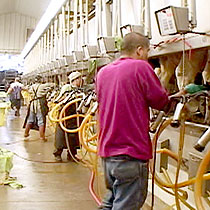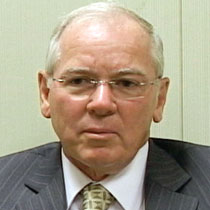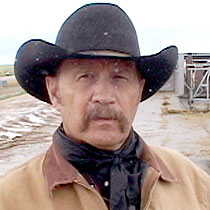2007年VOA标准英语-Concern Growing in US West Over Agroterrorism(在线收听)
By Jeff Swicord
Cheyenne, Wyoming
10 September 2007
There is growing concern that farms and ranches in the western U.S. could become the target of agroterrorism. The devastating outbreaks of foot and mouth disease in Britain and continental Europe have state officials in the U.S. west concerned that a terrorist could disrupt their communities and the food supply with a chemical or biological agent.

Workers at a dairy farm
VOA's Jeff Swicord talks with authorities in the cattle-rich state of Wyoming.
It could easily happen in a place like this -- a foreign disease agent maliciously introduced into a dairy herd in the state of Wyoming. The disease could quickly spread throughout the state with devastating results.
 |
| Joe Moore |
On any given day, thousands of head of livestock move through Wyoming to other states. An agroterrorism event could do incalculable harm to the economies of western states and disrupt the nations food supply.
Wyoming Livestock Board Veterinarian Walter Cook says introducing an agent like foot-and-mouth disease, anthrax or cholera into the state would be very easy.
"It is as easy as going over to one of the third world countries that has foot-and-mouth disease in their native population, taking a handkerchief and wiping the nose of a pig that is actively shedding the virus, putting that handkerchief in a plastic bag, putting it into your suitcase, and flying over to the United States and throwing that handkerchief into a feed lot, or sale barn situation, something like that. Then you could expose a lot of animals that way."
The Wyoming Livestock Board, in cooperation with the Office of Homeland Security and other agencies, is developing an early detection and rapid intervention plan.
State authorities say livestock producers and veterinarians would be the first to notice disease.
Then, tracking where the animal came from and where it has been would be critical to containing and stopping the spread of the disease.
"This cow right here, she has two brands," says State Brand Inspector Greg Bybee.
 |
| Greg Bybee |
"Well, if you had an outbreak of disease, you can use our paperwork and trace it back to where it originated from. And you will be able to find out where that cow has been, like from one rancher, to a sale barn, to another rancher, to a sale barn, to a feedlot."
Other agricultural states are also developing rapid response programs. Walter Cook says there is little chance of a foreign terrorist group striking in Wyoming. But he says the Livestock Board has received threats from domestic animal rights groups opposed to the sport of rodeo. "And the impact that it would have if it was done would be so huge that we really need to be prepared to deal with it."